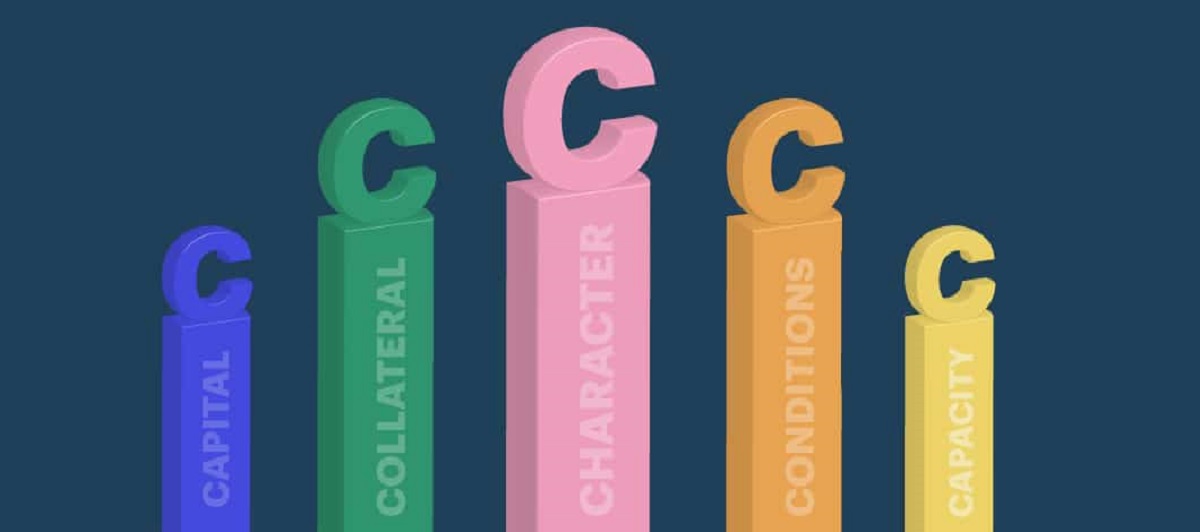Introduction
Welcome to the world of lending! Whether you are a borrower looking for a loan or a lender assessing potential borrowers, understanding the key factors that influence lending decisions is crucial. One such framework used by financial institutions is the Five C’s of Lending. These five C’s, which include Character, Capacity, Capital, Collateral, and Conditions, provide a comprehensive assessment of a borrower’s creditworthiness and ability to repay a loan.
The Five C’s of Lending serve as a guide for lenders to evaluate the risk associated with lending money and to ensure the safety of their investments. On the other hand, borrowers can leverage these factors to present a strong case to creditors and secure favorable lending terms.
While each of the five C’s is important, they collectively provide a holistic view of the borrower’s financial situation and the overall likelihood of timely repayment. In this article, we will explore each of the Five C’s in detail, understanding their significance and how they impact the lending process.
It is vital to note that the importance and weightage given to each of the five C’s may vary depending on the nature of the loan, the lender’s policies, and the borrower’s specific circumstances. However, a thorough understanding of these factors will help both lenders and borrowers make informed decisions and navigate the lending landscape more effectively.
Character: The Borrower’s Credit History and Reputation
Character is one of the most crucial factors considered when assessing a borrower’s creditworthiness. It focuses on the borrower’s trustworthiness, reliability, and history of fulfilling financial obligations. Lenders want to ensure that the borrower has a positive track record of repaying their debts on time.
The borrower’s credit history plays a significant role in determining their character. Lenders review the borrower’s credit score and credit report to evaluate their payment patterns, outstanding debts, and any history of defaults or late payments. A high credit score and a clean credit report indicate that the borrower is responsible and has a good reputation for meeting financial obligations.
It is important for borrowers to maintain a healthy credit history by paying their bills and loans on time. Any missed or late payments can negatively impact their credit score and diminish their character in the eyes of potential lenders. On the other hand, a consistent pattern of timely payments strengthens the borrower’s character and increases their chances of securing favorable borrowing terms.
Besides credit history, lenders also assess a borrower’s reputation based on their interactions with other lenders, businesses, and even personal references. Lenders may request references or contact previous creditors to gather information about the borrower’s reliability and integrity. A positive reputation reinforces the borrower’s character and enhances their credibility as a trustworthy borrower.
Overall, character is a critical factor that lenders use to gauge the borrower’s willingness and ability to repay the loan. By maintaining a good credit history and reputation, borrowers can positively influence their character assessment and improve their chances of securing the needed funds.
Capacity: The Borrower’s Ability to Repay the Loan
When evaluating a loan application, lenders closely assess the borrower’s capacity to repay the loan. Capacity refers to the borrower’s ability to meet their financial obligations and make timely loan payments based on their income, employment stability, and existing debt obligations.
The borrower’s income plays a crucial role in determining their capacity. Lenders analyze the stability and adequacy of the borrower’s income source to ensure that it is sufficient to cover both living expenses and future loan repayments. This assessment helps lenders determine the borrower’s ability to meet the required monthly payments without facing financial strain.
Additionally, lenders evaluate the borrower’s employment history and stability. A consistent employment record and a secure job provide assurance to the lender that the borrower will have a stable income stream to fulfill the loan obligations. Furthermore, borrowers with a high potential for career advancement or possessing valuable skills are often viewed more favorably by lenders.
Existing debt obligations are also taken into consideration when assessing capacity. Lenders examine the borrower’s debt-to-income ratio, which compares the borrower’s monthly debt payments to their income. A high debt-to-income ratio can indicate that the borrower may struggle to handle additional loan repayments. Ideally, lenders prefer a lower debt-to-income ratio, as it reflects the borrower’s ability to manage their existing debts and take on new ones.
By evaluating a borrower’s capacity, lenders aim to mitigate the risk of default and ensure that the borrower can comfortably meet their loan obligations. Lenders typically prefer borrowers with a stable income, secure employment, and a manageable level of existing debt. Demonstrating a strong capacity to repay the loan increases the borrower’s chances of obtaining favorable lending terms.
Capital: The Borrower’s Financial Resources and Assets
Capital is an essential factor that lenders consider when evaluating a loan application. It refers to the borrower’s financial resources and assets that can be used to repay the loan in the event of income disruption or financial hardship.
Lenders assess the borrower’s capital to determine their ability to withstand unforeseen circumstances and continue making loan payments. This evaluation helps lenders gauge the level of risk associated with lending to a particular borrower.
The borrower’s financial resources, such as savings, investments, and liquid assets, serve as a safety net and provide reassurance to lenders. These resources act as a cushion in case of a sudden loss of income or unexpected expenses, reducing the risk of default. Borrowers with significant financial resources are often viewed as more financially stable and capable of managing their loan obligations.
In addition to financial resources, lenders also consider the borrower’s assets. Assets, such as real estate, vehicles, or valuable possessions, can serve as collateral or security for the loan. If the borrower defaults on the loan, the lender can claim the assets to recover the outstanding debt. The presence of valuable assets strengthens the borrower’s position and increases their chances of securing the loan.
However, it is important to note that while the borrower’s capital is a significant factor, it may carry different weightage depending on the type of loan. For instance, in a secured loan, where collateral is provided, capital plays a more prominent role. In contrast, for unsecured personal loans, lenders may rely more on the borrower’s income and creditworthiness.
Overall, a strong capital position enhances the borrower’s credibility, providing lenders with confidence in the borrower’s ability to repay the loan. By showcasing their financial resources and assets, borrowers can demonstrate their financial stability and increase their chances of obtaining favorable loan terms.
Collateral: The Borrower’s Offered Security for the Loan
Collateral is an important consideration in the lending process, especially for secured loans. It refers to an asset or property that the borrower offers as security to the lender in exchange for the loan. The presence of collateral provides lenders with a form of repayment protection, reducing the risk associated with lending.
The value and quality of the collateral are crucial factors that lenders evaluate. Real estate properties, vehicles, investments, or valuable possessions are commonly accepted as collateral. The value of the collateral should be sufficient to cover the loan amount in the event of default.
By accepting collateral, lenders have the right to seize and sell the asset in order to recover the outstanding loan balance. This reduces the likelihood of financial loss for the lender and increases the borrower’s accountability to repay the loan in a timely manner. Moreover, the presence of collateral often leads to more favorable loan terms, such as lower interest rates or longer repayment periods.
While collateral is commonly associated with secured loans, it is important to note that not all loans require collateral. Unsecured loans, such as personal loans or credit card debt, are not backed by any specific asset. Instead, lenders rely solely on the borrower’s creditworthiness and capacity to repay. For unsecured loans, lenders may place more emphasis on the borrower’s credit history and income stability.
When offering collateral, borrowers should ensure that the asset is legally owned, free from any liens or encumbrances, and holds adequate value. It is also important to remember that failure to repay the loan as agreed may result in the loss of the collateral. Therefore, borrowers should carefully consider their ability to meet the loan repayments and understand the potential risks involved.
In essence, collateral provides lenders with a level of security and protection, allowing them to mitigate risk while offering loans. For borrowers, offering collateral can increase their chances of loan approval, provide access to larger loan amounts, and potentially result in more favorable borrowing terms.
Conditions: The Economic Environment and Purpose of the Loan
Conditions refer to the external factors that lenders consider when evaluating loan applications. These factors include the economic environment, industry trends, and the purpose of the loan. Examining the conditions helps lenders assess the potential risks and opportunities associated with the loan.
The overall economic environment significantly impacts the lending landscape. Lenders analyze economic indicators, such as interest rates, inflation rates, and GDP growth, to evaluate the risk of lending money. A stable and growing economy provides a favorable environment for lending, as borrowers are more likely to have stable incomes and businesses are more likely to prosper.
Similarly, lenders consider the conditions within specific industries. Some industries may face more challenges and risks, while others may be thriving. The lender assesses the borrower’s industry to determine the stability and growth potential, which affects the borrower’s ability to generate income and repay the loan. Understanding the industry-specific conditions helps lenders make informed decisions about loan approval and terms.
In addition, lenders evaluate the purpose of the loan. Different types of loans are employed for various purposes, such as purchasing a home, financing a business, or funding education. The purpose of the loan can affect the borrower’s repayment ability and the risks associated with the loan. Lenders consider the viability of the purpose and the potential impact on the borrower’s financial situation when assessing the loan application.
Moreover, lenders may also consider other conditions such as legal and regulatory factors, market trends, and borrower-specific circumstances. For example, the lender may look at the borrower’s creditworthiness, assets available for collateral, or the geographic location of the borrower. These conditions can influence the lender’s decision-making process and the terms offered to the borrower.
By analyzing the prevailing economic conditions and understanding the purpose of the loan, lenders can assess the risks and opportunities associated with lending. Borrowers should be aware of these conditions and present a compelling case to lenders by demonstrating their ability to cope with external factors and showing how the loan purpose aligns with their financial goals.
Conclusion
The Five C’s of Lending – Character, Capacity, Capital, Collateral, and Conditions – are essential factors that lenders use to evaluate borrowers and make informed lending decisions. Each of these factors provides unique insights into the borrower’s creditworthiness, repayment capability, financial stability, offered security, and the external conditions that may impact the loan.
Character, as reflected in the borrower’s credit history and reputation, showcases their trustworthiness and commitment to meeting financial obligations. Capacity emphasizes the borrower’s ability to repay the loan based on their income, employment stability, and existing debt obligations. Capital assesses the borrower’s financial resources, assets, and collateral that can act as a safety net for loan repayment. Collateral provides lenders with a form of security, reducing the risk involved in lending. Lastly, Conditions consider the economic environment and the purpose of the loan, allowing lenders to evaluate potential risks and opportunities.
It is important to note that while the Five C’s provide a comprehensive framework for assessing borrowers, the weightage and relevance of each factor may vary based on the type of loan and the lender’s policies. Therefore, borrowers should understand these factors and present a strong case that aligns with the specific loan requirements.
By being aware of the Five C’s of Lending and addressing each factor effectively, borrowers can enhance their creditworthiness and increase their chances of securing loans on favorable terms. Lenders can also utilize this framework to mitigate risk and make informed lending decisions that align with their risk appetite and business objectives.
In conclusion, the Five C’s of Lending serve as a valuable tool in the lending process, providing a comprehensive assessment of a borrower’s creditworthiness and repayment capability. Understanding and addressing each of these factors can lead to successful lending experiences for both borrowers and lenders alike.

























